Channel markers program intended to keep boaters, others on the Connecticut River safe struggles to stay afloat
| Published: 07-02-2023 12:22 PM |
NORTHAMPTON — Amid the patriotic displays of fireworks booming across the Valley skies, the aroma of burgers and hot dogs sizzling on a grill, and red, white, and blue decor draping tabletops and tents for outdoor barbecues, there’s also an influx of frivolity on the Connecticut River.
With historically warmer weather and more people enjoying the federal holiday off from work, the Fourth of July is one of the busiest days on the longest New England river.
And since there aren’t any requirements to be certified in boating safety, the need for navigational aids like buoys, sometimes called channel markers, becomes even more vital, said Paul Nowak, who is certified as a captain by the U.S. Coast Guard and also serves as captain of the Lady Bea river cruises.
Although buoys were recently deployed along more than 10 miles of navigable waterway, finding the funds to consistently sustain this safety resource has hit a snag as maintenance costs have increased exponentially. Over the past few months, Nowak and several others are putting out a plea to find a way to pay for these navigational aids.
“It’s absolutely critical because this river over the last 20 years has quadrupled in population of boats,” said Nowak, who also sits on the Connecticut River Channel Marking Committee in Northampton. “What you have is a lot of people purchasing boats that for one may not even know how to use them properly, and several may not understand the rules of the road on the river.”
Since the early 2000s, the city of Northampton has been spearheading the Connecticut River Channel Markers Program on behalf of all the communities with riverfront from Northampton to Holyoke, including Hadley, South Hadley, Easthampton and Holyoke, according to Sarah I. LaValley, assistant director of the Northampton Office of Planning and Sustainability.
The purpose of the program is to provide buoy markers in the navigable portion of the river from north of the Coolidge Bridge to north of the Holyoke dam, LaValley said.
Much like signs on a roadway, channel markers, or marker buoys, help speedboats, pontoons, jet skiers, and kayakers and canoers delineate areas of safe travel as well as dangerous hazards.
Article continues after...
Yesterday's Most Read Articles
 More than 130 arrested at pro-Palestinian protest at UMass
More than 130 arrested at pro-Palestinian protest at UMass
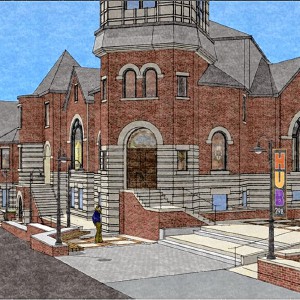 Public gets a look at progress on Northampton Resilience Hub
Public gets a look at progress on Northampton Resilience Hub
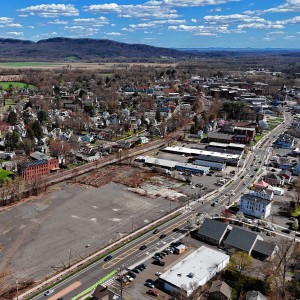 Northampton bans auto dealerships near downtown; zone change won’t affect Volvo operation on King Street
Northampton bans auto dealerships near downtown; zone change won’t affect Volvo operation on King Street
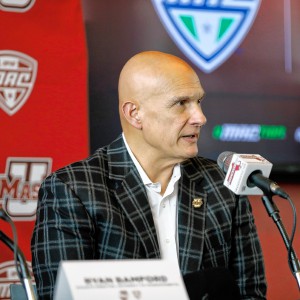 UMass basketball: Bryant forward Daniel Rivera to be Minutemen’s first transfer of the offseason
UMass basketball: Bryant forward Daniel Rivera to be Minutemen’s first transfer of the offseason
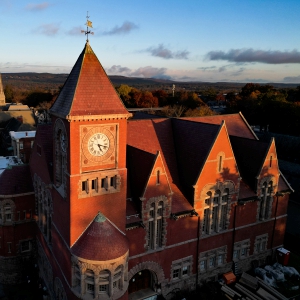 Town manager’s plan shorts Amherst Regional Schools’ budget
Town manager’s plan shorts Amherst Regional Schools’ budget
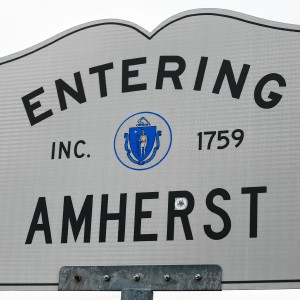 Police respond to alcohol-fueled incidents in Amherst
Police respond to alcohol-fueled incidents in Amherst
These buoys also depict areas of “no wake,” or areas that require water vessels to travel at a speed of 6 mph or less as to not create a wake, as well as underwater shallows or other obstacles that might not be immediately visible, such as rock hazards.
Since the beginning, LaValley said that Northampton has overseen the bidding and selection of a contractor that builds, places and maintains the markers in the river from Memorial Day to Labor Day each year. The city has taken the lead due to limited staffing and resources in the other communities, she said.
Funding for the program comes from annual payments of a portion of local boat excise tax from participating communities, as well as a fixed rate from Holyoke Gas & Electric as detailed in the organization’s license from the Federal Energy Regulatory Commission.
What’s particularly unique about the Connecticut River is the lack of jurisdiction and oversight. Though surrounding communities contribute police boats to help patrol the waters, there is no harbor master or U.S. Coast Guard involvement because the stretch of river is outside of their jurisdiction. Additionally, there is no state agency that has been able to help the Connecticut River Channel Marking Committee with funding.
“It’s slipping through the cracks because it is so unique,” said LaValley.
Typically, a three-year contract – which required the winning bidder to store, replace or repair damaged buoys over the winter – was between $40,000 and $50,000, according to LaValley.
“Spread out between the participating communities, this was an achievable amount,” she said.
However, when Northampton issued a request for proposal for a five-year contract, the sole bidder submitted a proposal of $279,000, or approximately $56,000 annually, the costs for the collective communities to undertake have become untenable.
As such, contract negotiations stalled between the Channel Marker committee and the vendor.
The buoys are traditionally deployed prior to Memorial Day, but without a contract in place, the work was delayed until this past week when the sole vendor, Pioneer Valley Marine Services, and the committee were able to sign a one-year contract with a previous year’s bid.
“This is a stop-gap that does not solve future funding questions,” said LaValley.
Capt. Bill Heyn of Pioneer Valley Marine Services is among one of the few that are qualified to deploy the navigational aids on the river. He owns a commercial crane boat, also known as a “buoy tender,” which is the only vessel in the area that’s capable of installing and retrieving the buoys on the river.
Heyn, a native of South Hadley, worked with the previous boat owner who performed the work for about two years and then purchased the boat from him and has continued that work for the past three years.
“We lift the weights that hold the buoys down that are around 250 pounds, and we use this vessel to safely move them, lift them up and repeat 55 times,” said Heyn, referring to the number of buoys. “This is extremely labor intensive. Last year we had a total of 300 man hours.”
In addition to the first round of installation, Pioneer Valley Marine Services’ contract also includes maintaining the buoys, which includes replacing reflective tape and hardware on occasion, and shifting them back to their original location as both strong currents and boaters colliding into them can damage them and knock them off their station.
In 2021 alone, flooding led Heyn to repositioning all of the channel markers twice.
He’s also responsible for storing them and hauling them. On average, Heyn says it takes about six dump truck loads to get the markers to and from the river.
Aside from the maintenance of the markers themselves, the boat ought to be replaced, he said. And replacement of the specialty boat comes with a price tag around $100,000.
Over the years, Heyn has had to absorb some of the costs as the contract was not covering all of the expenses required to manage the channel markers program. The increased costs led to a much higher contract than previous years.
“Fuels gone up. Commercial marine insurance has gone up. Docking has gone up,” he said. “The contract numbers are from 20 years ago. They haven’t ever been increased.”
Outdoor recreation has seen a considerable boon in the state following the COVID-19 pandemic. The economic impact of boating within the 1st and 2nd congressional districts in Massachusetts accounts for more than $650 million, 2,000 jobs and roughly 60 businesses, according to Randall Lyons, executive director of the Massachusetts Marine Trades Association.
“Boaters are spending money on food, shopping, lodging, fuel and more throughout the season,” said Lyons. “Keeping boaters safe and comfortable on the river should be a priority for towns within the region, to maintain this positive impact within the region.”
Having spent time on the Connecticut River boating since he was 16 years old, Nowak, now 65, is all too familiar with the dangers on the water. On a recent trek down the river with the Gazette, Nowak and Heyn would stop and point out hazards along the way. As the boat entered a no wake zone, the two captains pointed to a giant rock hazard that was not visible above the water.
Last year, the U.S. Coast Guard counted 4,040 accidents that involved 636 deaths, 2,222 injuries and roughly $63 million in damage to property as a result of recreational boating accidents, according to a 2022 report.
Among the top contributing factors to injury or death were operator inattention, excessive speed, alcohol use and operator inexperience. The report shows that where instruction was known, 74% of deaths occurred on boats where the operator did not receive boating safety instruction.
Though Heyn was able to step up for another year to ensure that the channel markers were installed, this year’s solution is only a temporary one, says Nowak. Over the next year, he and other committee members will continue to seek out additional funding sources in an effort to maintain the safety of one of the area’s most-used recreational resources, reaching out to any and all entities – from the Coast Guard to the Department of Conservation and Recreation.
“The 2023 contract is not a solution, it’s just a band-aid,” said Nowak. “I’m going to be looking for money in every direction I can.”
Emily Thurlow can be reached at ethurlow@gazettenet.com.
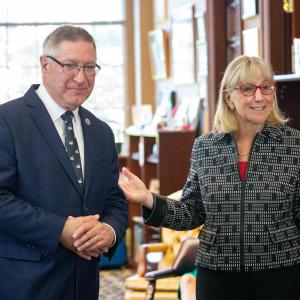 State Senate budget funds free community college for all
State Senate budget funds free community college for all ‘We can just be who we are’: Thousands show support for LGBTQ community at Hampshire Pride
‘We can just be who we are’: Thousands show support for LGBTQ community at Hampshire Pride Doors open at Tilton Library’s temporary home at South Deerfield Congregational Church
Doors open at Tilton Library’s temporary home at South Deerfield Congregational Church Area property deed transfers, May 2
Area property deed transfers, May 2
